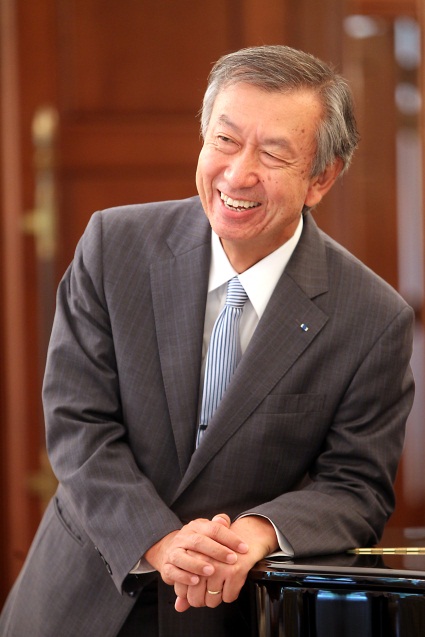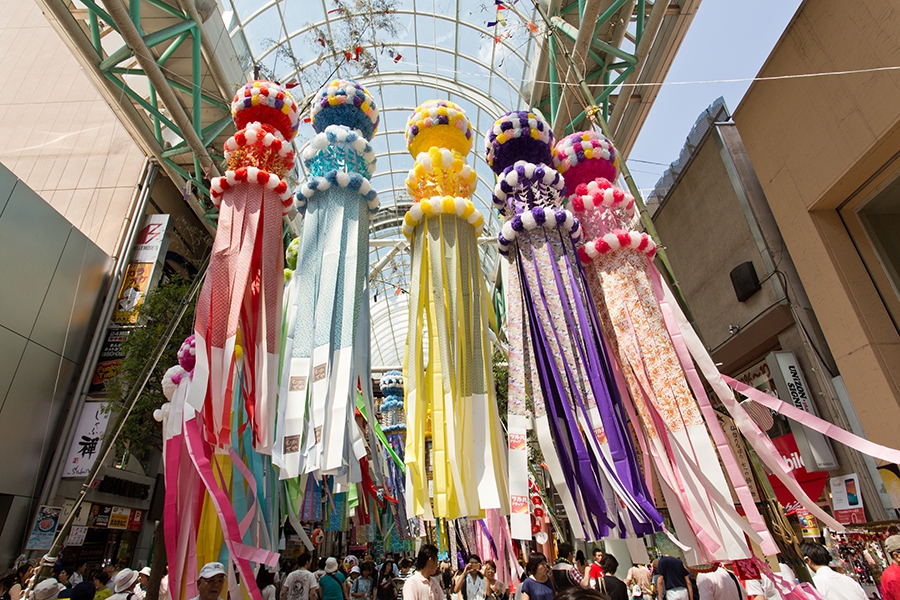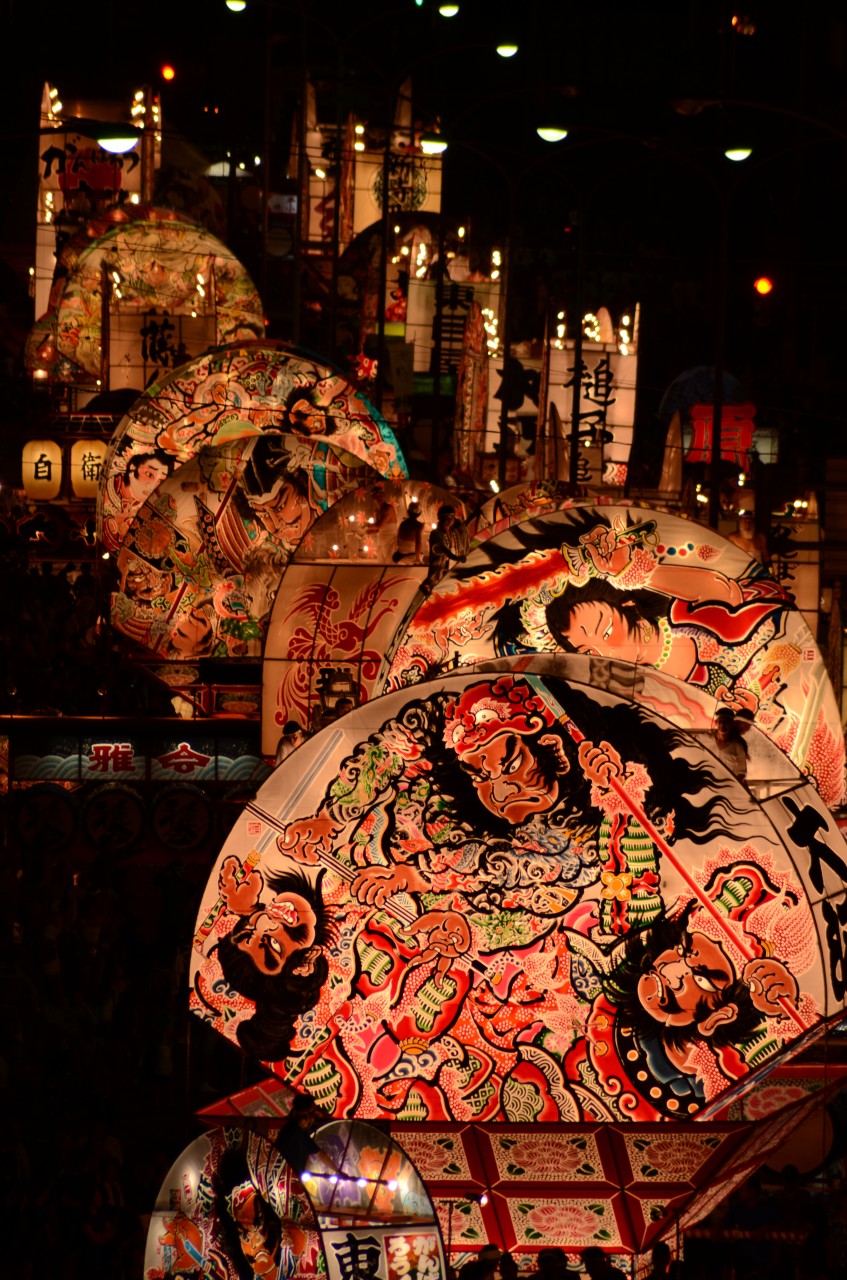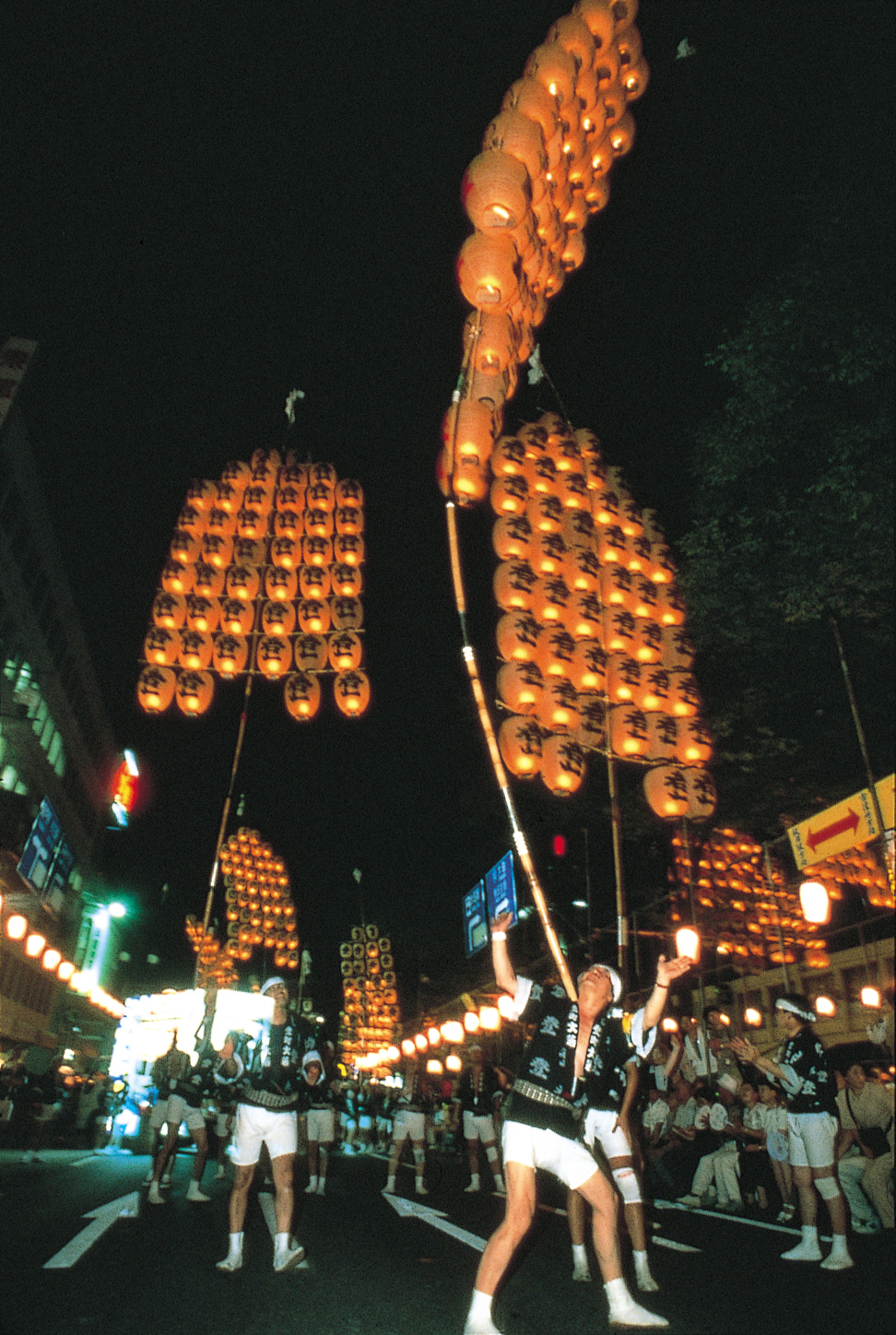09 July 2015
Makio Miyagawa
Pilgrimage
is the origin of tourism. Pilgrimage is one of the forms in which
humans have shown reverence to their gods. Mecca, Jerusalem,
Rome, Istanbul, and Athens have long been destinations for many
visitors. In olden days, when mobility of people was restricted
not only under rules but also in terms of available means of
transportation, pilgrimage provided both an authentic reason to travel
and a motivation to spend fortunes for it. Just as tourists do
today, those who went to pilgrimage, brought back souvenirs and travel
stories to fascinate others who remained.
|
 |

Tanabata Festival: (C)Sendai Chamber of Commerce and Industry | For the Japanese,
the oldest place for our pilgrimage is Ise Jingu(伊勢神宮), located south
of Nagoya(名古屋), whose deities are believed to be are the ancestors of
many ancient clans including the Imperial Family. The shrines
still exist at the same place in just the same shape as they did over
2,000 years ago. The wooden shrine buildings have been rebuilt
every 20 years as a long-established religious ritual, since the year
690. Many generations of our ancestors have worshiped at this
shrine for many centuries, just as they do today.
For many
centuries, a set of organized travel to and from sacred places have
blurred the line between tourism and pilgrimage. In our modern
age, no such religiously authentic reason is no longer needed to visit
places. Transportation methods have so conveniently been
developed as to enable much quicker mobility with far less costs.
For the last two centuries, world tourist destinations have become
numerous.
Tourist information centres have notified us
that tours to Japan |
in the coming summer are alluring
tourists. With such gathering momentum added, Malaysian
visitors to Japan reached a new record high of 249,521 in 2014,
surpassing its previous high of 176,521 in 2013. This registers a
41.4% increase. As the Ambassador of Japan, I am very pleased to
see tourism to Japan has been prospering year after year.
Tourist
destinations in Japan have also diversified. Major cities are no
longer the sole targets of tourism. Smaller towns and villages
have begun attracting foreign visitors. A recent
survey revealed Malaysian tourists to Japan have tended to appreciate
natural beauty or scenic spots of four seasons. Let me recommend
the readers to try enjoying festivals in Japan, even by way of
experience. All over Japan, throughout the year, there are
numerous festivals, “Matsuri(祭)” in Japanese terminology, in which
tourists may find parts of our culture and tradition. |
July
and August are a summer festivity season in Japan. Houses and
villages prepare the return of souls of ancestors for several days
either in July or in August, depending on regions. Family shrines
and altars are embellished with flowers and added flagrance of burning
incense. Banquets are served with light entertainments
performed. Fire is kindled in flaming torches on their arrival
evening on the 13th to show them their way back home, and on their
departure night on the 16th to give a farewell light to illuminate
their way back to heaven. Such religious tradition has
transformed into festivity in modern times. Local communities,
villages and towns, perform their own special festivals almost all over
Japan.
This time of the year, what I would like to
recommend most are the following three festivals in Aomori(青森),
Akita(秋田) and Sendai(仙台), which take place coincidentally in early
August consecutively. I hope the readers of Shinchew and our Malaysian
friends will enjoy these festivals in our Northern prefectures, hopping
from one city to another. Our Shinkansen, the original high speed
rail trains, will offer you rapid and punctual transportation services
to make your trip to these three cities comfortably possible.
Nebuta
Festival(睡魔祭) is held in Aomori and Hirosaki(弘前) from 2nd to 7th
August. As many as forty multi-coloured festival floats – each,
in average, ten metres wide and five metres tall - with luminous paper
figures of warriors or princesses turn out on streets and parade around
the cities after night falls. The origin of this festival is
believed to be a religious service in the eighth century of floating
small wooden boats with lanterns in the late summer evening, sending
off souls of ancestors returning to Heaven through rivers onto the sea,
after several days of their revisits to their home. | 
Nebuta Festival: (C)JTA/(C)JNTO | From
3rd to 6th August, Kanto Festival(竿灯祭)is held in Akita. Energetic
youths turn out on streets after dark and parade, lifting up
approximately ten-meter-high poles, each, like a mast of a sailing
ship, clustered with 24 or 46 candle-lit lanterns depending on the size
of the pole. The procession of over 250 such poles appear as if
fully ripe rice plants were waving in autumnal wind. The festival
originated over 260 years ago, in prayer for rich harvest in the coming
autumn, to solidify local communities and to train the youth.
Tanabata
Festival (七夕祭)held from 6th to 8th August in Sendai, beautiful
decorations crafted with bamboo and paper are hung down in the arcades
in the centre of the city to offer citizens an occasion of feeling
release and joy of mixing with others on hot summer evenings.
This festival originated more than four hundred years ago when the
warlord wished to raise the level of dexterity of weaving and crafting
by appreciating and promoting it through the competition of beauty of
decorations. Tanabata reminds an anecdote in the ancient China of
a daughter of a King, though once allowed to marry a cowherd, was
ordered to return to the Palace, as she failed to honour the King’s
instruction to continue weaving.
Matsuri are the
embodiments of what we Japanese have inherited from our ancestors and
what will be passed on to the future generations. Matsuri are not just
about beautiful decorations and night stalls with delicious food, but
rather, it represents our soul to maintain communications with our
ancestors, to celebrate family, friends and neighbours bonding, to
appreciate nature, and to keep our traditions alive. Those who wish to
participate are all more than welcome too. I hope you will enjoy
them.

Kanto Festival: (C) Akita Kanto Executive Committee | |